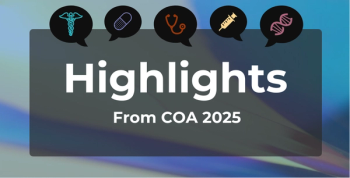
Future Promise, Existing Challenges of Using Technology to Improve Care Delivery
While technology continues to improve, healthcare has not always been quick to keep up with changes. Panelists at The American Journal of Managed Care®’s Accountable Care Delivery Congress highlight the ways their organizations are using technology to improve care.
There is a disconnect between the pace of change in healthcare and the pace of technology innovations, and 3 panelists discussed how their organizations are at the forefront of the field by using technology to improve healthcare delivery. During The American Journal of Managed Care®’s Accountable Care Delivery Congress, Taylor Justice of Unite Us, Arien Malec of Change Healthcare, and Edwin Miller of Aledade highlighted how they are using technology to coordinate care.
Unite Us, a software organization that addresses social determinants of health, connects patients to appropriate resources. Justice explained that the company thinks about the existing infrastructure and how to plug into it.
“How can we create value for you or help you work more efficiently?” he asked. The idea is that their software will reduce administrative time spent on emails, phone calls, and simple Google searches to find resources in the area that patients can be directed to.
He explained Unite Us’ true north as proving that a person actually got to the recommended resource and received the service he or she needed. While most of healthcare is built in silos, Unite Us has the ability to allow information to travel with the patient. So, if someone leaves San Diego, California, spends time in San Antonio, Texas, and ends up in New York, New York, that information travels the whole way with the patient, and each new organization is granted permission to see the data that it needs to provide care for the patient. As a result, there is 1 record for a patient being used by multiple organizations instead of 10 organizations having 10 different records for 1 patient. He likened it to a Google Doc that multiple people are given access to so they can add components.
Miller explained that Aledade is trying to create things that didn’t exist before, which is a struggle since current tools are firmly rooted in fee-for-service. Interoperability is still patchwork throughout the country, but Aledade takes what is out there and brings it together.
Aledade partners with providers who want to make the shift to value-based care but need help with regulatory issues, technology, data analytics, and more that is needed during the transformation. It has spread its work across 22 accountable care organizations, and Miller said that Aledade has seen consistent results with reduced hospital utilization and improvements in transitions of care and other measures.
Malec highlighted the fast-changing technology landscape in healthcare, with artificial intelligence (AI) and machine learning starting to be used to relieve administrative burdens.
“What we’re doing is not the holy grail of replacing the physician and having the computer do everything for you,” Malec explained. “We’re trying to automate a lot of the routine activities of healthcare” and have people work at the top of their license.
So far, claims data is being used by these technologies to reduce practice variation, especially unexplained practice variation, he said. For instance, looking at why one doctor is using imaging more intensively than a peer who is managing a similar population of patients
There are still challenges in the way of using new technologies to the best of their ability, though, Justice explained. While he is optimistic that Unite Us can impact big quality-of-life issues like life expectancy and infant mortality, he’s less optimistic that CMS and the US healthcare system in general will let them get there. The problem is that the systems are not in place. It's one thing to find housing for someone with health issues, but it’s another thing if that housing is on the north side of town and their doctor is on the south side of town; now, there’s a transportation issue that needs to be corrected.
The next steps to improve technology use and interoperability in healthcare include addressing data blocking, in which hospitals and health systems hold onto patient data and don’t share it, said Miller.
“The data blocking is real,” he said. “We have trouble getting information. We struggle to get those connections.”
Justice said that Unite Us is looking at expanding its work to deliver care to local populations, regardless of who is in that population, so that community service providers are on par with healthcare providers from a technology standpoint and people aren’t stuck using pen and paper when trying to connect community services.
“Tech is just a piece” for addressing social determinants of health in the community, he said. “We are not a silver bullet. We are a tool that connects humans to humans.”
Newsletter
Stay ahead of policy, cost, and value—subscribe to AJMC for expert insights at the intersection of clinical care and health economics.








